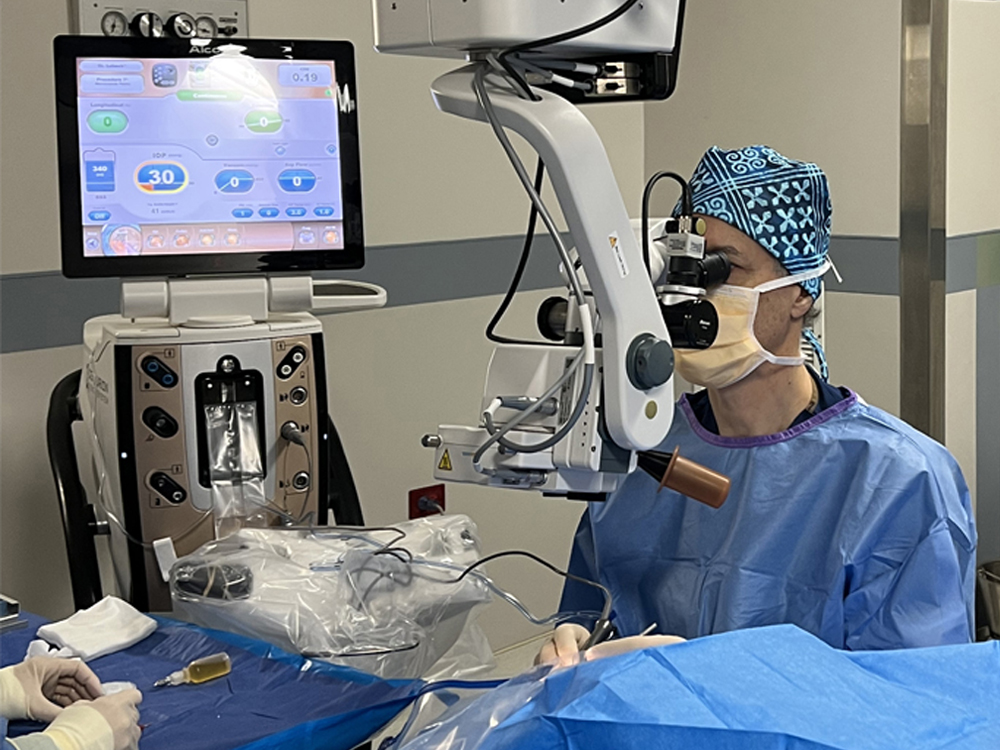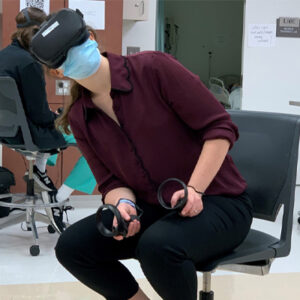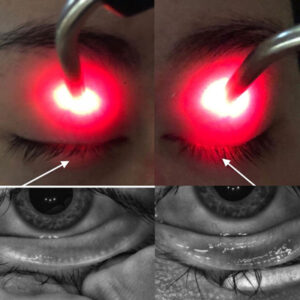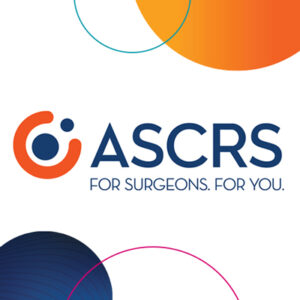Cataract: Back to basics
September 2022
by Ellen Stodola
Editorial Co-Director
Understanding the basic concept of phaco fluidics is important for successful cataract surgery, particularly when differentiating among the systems available and how they can help surgeons and patients. David Lubeck, MD, broke it down in a discussion with EyeWorld.
In beginning to discuss this topic, Dr. Lubeck said you need to go back to the basic premise of phaco fluidics. Everything done in the system, every parameter in passive/gravity fluidics—including the bottle height, incision size, the phaco sleeve size, the second incision size, the height of the bed, the patient eye level, flow rate, vacuum setting, and the efficiency of the pump—is related to how stable the eye is going to be during cataract surgery. “You can’t look at only one part of the system to determine the fluidics,” he said. “You have to look at every piece of it to understand it, then if you want to maximize your intraocular stability, you have to be able to manipulate the different pieces of the system to your advantage.”

Source: David Lubeck, MD
The first component in fluidics stability is the infusion pressure, the pressure of the fluid going into the eye and how well you can maintain that at a constant level. When you have a gravity infusion system, the higher you raise the bottle, the higher the pressure you can create, but the more the pressure will drop when you have an occlusion break or when you have inefficiencies in the system beyond the fluid inflow, Dr. Lubeck said. “With a gravity fluidics system, you can raise the infusion pressure by raising the bottle, but in doing so you also are creating a higher gradient for surge and loss of intraocular stability,” he explained.
Dr. Lubeck uses Active Fluidics with the Centurion Vision System (Alcon). With this system, he said the infusion of balanced salt solution is pressurized to a specific level. There is also a sensor and valve system in the machine that is constantly monitoring the pressure in the eye or the pressure in the tubing connected to the eye, and the valve is opening and closing in milliseconds to keep the intraocular environment as stable as possible, Dr. Lubeck said. He thinks this option provides more control and stability of the intraocular pressure than using a gravity infusion system.
Dr. Lubeck noted that other companies also have advanced phaco systems. Other options in this class of advanced fluidics systems include Bausch + Lomb’s StableChamber using the Stellaris Vision Enhancement System and Johnson & Johnson Vision’s hybrid fluidics using the Veritas Vision System, as well as the QUATERA 700 from Carl Zeiss Meditec.
You want the most stable possible intraocular environment for all procedures, Dr. Lubeck said, so once you use a machine with advanced fluidics, you won’t want to go back to a less efficient system.
Dr. Lubeck compared the switch to an advanced fluidics system as similar to transitioning from doing LASIK with a microkeratome to a laser. “Anyone who wants to be as safe and successful a cataract surgeon as possible will be working with an advanced fluidics system,” he said.
[template id=14580]When transitioning from a gravity system to an advanced pressurized system, Dr. Lubeck said one of the challenges is that, in general, there isn’t a deep understanding of fluidics. It can be hard for surgeons to explore and realize all the capabilities of the new system. New fluidics technology provides more safety and efficiency, he said, but often physicians don’t fully maximize the benefits of these systems.
Once a surgeon understands the capability of the system, they can make the procedure more efficient. They can do the procedure at a lower intraocular pressure, he said, adding that there is data to suggest that operating at a lower pressure is better for the eye. They can also make the procedure more comfortable for the patient and use higher power settings, vacuum and flow to accelerate the cataract removal portion. The gravity systems require that you operate with a pressure in the eye higher than a normal pressure, and this can lead to mild to extreme discomfort for patients. “But with advanced fluidics systems, we can operate at a lower pressure, so that the patient never experiences that level of discomfort,” he said.
Dr. Lubeck has seven different procedures pre-programmed into his machine settings for various situations of cataract densities, different ways the eye may be compromised, and different levels of stability. “It’s about understanding why you would want to change the fluidics and ultrasound settings for different situations,” he said.
The primary options for surgeon education on advanced fluidics systems are local and national meetings, the internet, and the knowledge of company representatives and technicians. He thinks most of the learning happens between the company representative and the surgeon. Dr. Lubeck said it’s important for surgeons to give themselves the time and mental space to learn about fluidics and how they want it to fit into and improve their practice.
About the physician
David Lubeck, MD
Director of Cataract, Cornea, and Advanced Anterior Segment Surgery
Arbor Centers For Eyecare
Homewood, Illinois
Relevant disclosures
Lubeck: Alcon, BVI
Contact
Lubeck: dmaclubes@earthlink.net



